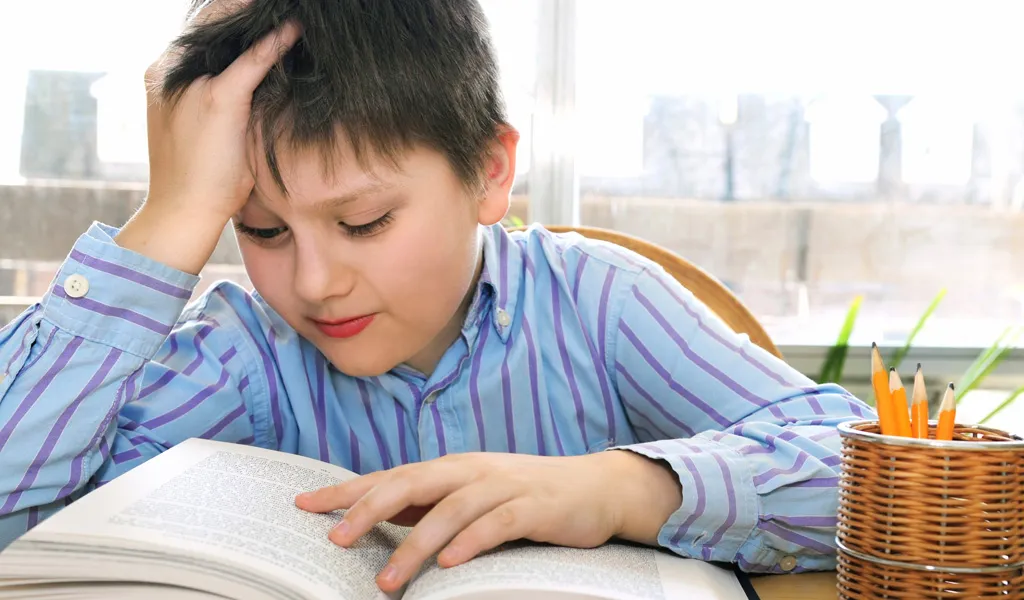Dysorthographia is a specific learning disorder that affects the ability to acquire and apply spelling rules. This disorder particularly affects writing, conjugation, and grammatical agreements. It is not simply a matter of occasional spelling mistakes that could be corrected with more practice; dysorthographia is a lasting disorder that persists despite traditional teaching and repeated efforts.

Dysorthographia can be present alone or in association with other learning disabilities, such as dyslexia, which affects reading. This disorder can complicate a child’s schooling, particularly in subjects that require high levels of written rigor. However, with early detection and appropriate management, children with dysorthography can improve their written proficiency.
What is dysorthographia?
Dysorthographia is a neurodevelopmental disorder that affects the mechanisms of learning to write. This disorder manifests itself in difficulty in understanding and correctly using spelling rules, which results in frequent errors in writing. Although a child may have a good understanding of grammar and spelling rules when speaking, this knowledge is not translated into writing.
Types of Dysorthographia
There are several forms of dysorthography which can manifest themselves differently in different children:
- Phonological dysorthographia: the child has difficulty correctly transcribing the sounds he hears. He often confuses letters or syllables that are pronounced similarly.
- Lexical dysorthography: the child has difficulty memorizing the spelling of words. He makes mistakes with frequent words and is unable to automate their spelling.
- Grammatical dysorthography: the child has difficulty applying the rules of grammatical agreement (gender, number, conjugation).
How to recognize dysorthographia in children?
Dysorthographia is characterized by frequent, incoherent, and persistent errors in writing. Here are some signs that may indicate that your child is suffering from it:
1. Frequent and repeated spelling errors
One of the most obvious signs of dysorthographia is the frequency of spelling mistakes even after the child has been corrected and has had the opportunity to learn the rules. These mistakes may involve:
- Confusion of letters or sounds (for example, confusing “p” and “b”, “d” and “t”).
- Letter inversions in words (for example: writing apart instead of “pâle”).
- Omitting or adding letters in words (for example: writing “soldier” instead of “soldier”).
2. Problems with grammatical agreements
The child may have difficulty with gender and number agreements:
- He forgets to agree adjectives with nouns for (example: writing “les petite filles” instead of “les petites filles”).
- He does not conjugate verbs correctly, even after several explanations (for example: writing “ils manger” instead of “ils mangent”).
3. Difficulty applying spelling rules despite repetitions
Even when the child has been exposed to grammar and spelling rules repeatedly, he or she continues to make the same mistakes. He or she seems to have difficulty memorizing the rules and applying them in different writing contexts.
4. Inconsistency of errors
The spelling mistakes made by a child with dysorthography are often consistent. Or example, he may spell a word correctly one time, then make a mistake on that same word a few lines later. This variability in errors is a key indicator of the disorder.
5. Excessive use of compensatory strategies
A child with dysorthographia may try to ensate for his or her difficulties iinusing words to avoid complex errors, by limiting the length of his or her sentences, or by choosing sentences that require fewer grammatical agreements.
Causes of dysorthography
Dysorthographia is usually caused by a urological disorder that affects cognitive functions related to writing. It is not due to a lack of effort or motivation. This disorder can be hereditary, but it is also associated with reading disorders, such as dyslexia.
The brains of children with dysorthography have difficulty processing and automating spelling rules. The exact causes are still poorly understood, but it is established that dysorthography is linked to dysfunction in the areas of the brain responsible for written language.
Ow to diagnose dysorthographia?
If you suspect that your child has dysorthographia, it is important to consult a speech therapist or a psychologist or informal diagnosiss. This diagnosis is based on a series of tests to assess the child’s ability to:
- Correctly transcribe the sounds he hears (phonological tests).
- Apply grammatical agreement rules (grammar tests).
- Memorize the spelling of words (lexical tests).
The diagnosis will allow us to put in place a follow-up and sup rt plan adapted to help the child overcome his difficulties.
How to help a child with dysorthography?
Once dysorthographia has been diagnosed, it is essential to put strategies in place to help the child progress, both at home and at school. Here are some tips:
1. Speech therapy
Regular follow-up with a speech therapist is crucial. The speech therapist will use appropriate exercises to strengthen the child’s writing and spelling skills.
2. Educational arrangements
In schools, it is important to put in place arrangements :
- Extra time during dictations and exams.
- Increased tolerance for spelling mistakes in subjects other than French.
- Using a spell checker or digital tools to make writing easier.
3. Educational games
At home, educational games can be a great way to help your child improve their spelling in a fun way. Word games, like Scrabble or interactive spelling apps, are great for making learning fun.
4. Encouragement and patience
Dysorthographia can affect a child’s self-esteem, especially when comparing themselves to their peers. It is important to value their progress, even small ones, and to build their self-confidence.
